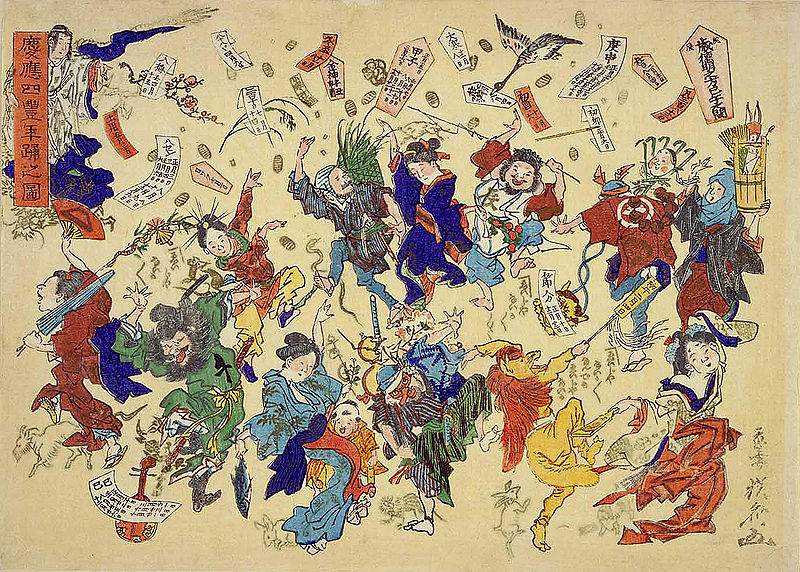
The End of the Edo Period and the Ee ja nai ka
The Edo period, also known as the Tokugawa period (1603 – 1868) was a time in Japan’s history where Japanese society was under the rule of the Tokugawa shogunate and the country’s 300 regional daimyo.
Commodore Matthew C. Perry’s visit of Kanagawa, near the site of present-day Yokohama on March 8, 1854.
Japans economy was thriving, there was a strict social order, a stable population and no more warring states. The country observed isolationist foreign policies and Confucianism ideologies were encouraged under Buddhist religious control. The Tokugawa period came after the Fall of Edo.
The cause of the end of the Edo Period is controversial and its collapse is caused by many factors, one of which is the forcing the end of Japan’s sakoku years by Commodore Matthew Perry. Foreign intrusions also helped in exacerbating the political struggle between the bafuku and a coalition of its critics.
Edo period social class. | TheInfernoX
A major contributing factor to the decline of the Tokugawa was the mismanagement of the central government by the shōgun, which made the social classes in Japan fall apart. The relentless anti-bafuku movement would eventually topple the Tokugawa regime.
Ee ja nai ka were carnivalesque religious celebrations and communal activities that were a form of social and political protests that occurred towards the end of the Edo period in many parts of Japan. The movements began in the Kansai region, near Kyoto.
Ee ja nai ka. Dancing scene of the “Ee ja nai ka” movement.
Ee ja nai ka is not linked to any particular political platform, but it is often understood in Japanese culture that it is a form of political protest when other ways to protest were prohibited as in the case of the fall of the Tokugawa shogunate. The Ee ja nai ka movement spread across Japan like wildfire, eventually descending to mob violence before finally coming to an end.
The last years of the bafuku took drastic measures to reassert its dominance, but its involvement with modernization and foreign powers made it a target for anti-Western sentiment by the masses.
Boshin War. Bakufu troops near Mount Fuji in 1867. Painting by Jules Brunet.
Revering the emperor as a symbol of unity brought more uprising against the Bafuku, the Han and foreigners. The unrest culminated an the Boshin War, a civil war in Japan from 1868 to 1869 between the Tokugawa Shogunate forces and those opposed to their rule. The war stemmed from the dissatisfaction felt by many samurai and Japanese noblemen on how the shogunate handled trade issues when they opened Japan’s trade to other countries, and the increase in Western influence on the local economy.
The Meiji Restoration period came after the fall of Edo and this brought many changes in Japan’s political and social structure and made Japan what it is today.




